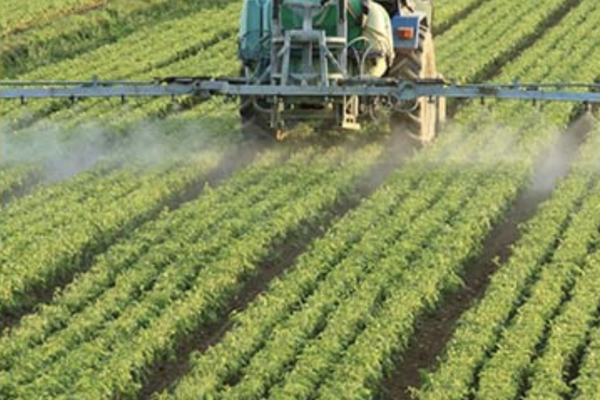Key Points/Overview
Pesticides help the agriculture community manage insects, diseases and invasive weeds to protect the world’s food supply. Consumers also use pesticides to protect themselves from insects and their property from termites and invasive plants.
Pesticides control vermin that may pose a risk to crops, livestock or property.
The chemical makeup of pesticides is monitored by the EPA, and the FDA periodically tests residue on food products to ensure they do not exceed safe levels.
If a pesticide is accidentally ingested, or otherwise incorrectly used, call the Poison Control Hotline at 1-800-222-1222.

Uses & Benefits
Chemicals help create pesticides that, when used properly, provide great benefit to growers. These products are also regulated by the U.S. Environmental Protection Agency (EPA) to ensure minimal potential risk to humans, animals and the environment. The use of pesticides helps protect the food supply, lower the costs of foods for consumers, and ensure that the food products consumed are of excellent quality.
Pesticides also help protect consumers and their property from a wide variety of problems. Pesticides help keep homes free of termites, disease-carrying rodents and insects, and other unsanitary pests. Individuals use pesticides in the form of bug repellent to keep themselves and their families safe from bug bites that may carry diseases like the West Nile virus, Lyme disease and malaria. The use of pesticides also helps rid gardens of unwanted bugs and weeds.

Safety Information
The U.S. Environmental Protection Agency (EPA) regulates all forms of pesticides used in the United States, including pesticides imported from foreign countries. EPA requires pesticides manufacturers to follow very strict guidelines when applying to sell the pesticides. For pesticides used on food products consumed by humans or animals, such as livestock feed, EPA regulates the amount of pesticide residue that is found on the food.
The Food and Drug Administration (FDA) and U.S. Department of Agriculture (USDA) also work to monitor potential residues on food products. A 2014 USDA report found that 99% of all food samples tested were below limits established by EPA, and stated that “U.S. food does not pose a safety concern based upon pesticide residues”.
Pesticides should be used properly, in accordance with label instructions. If the pesticides are not used correctly, there is a potential risk of harm. If an individual ingests or comes into contact with a pesticide, they should immediately call the Poison Control Hotline, 1-800-222-1222. First aid guidelines also provide information on treatment for pesticide ingestion.


